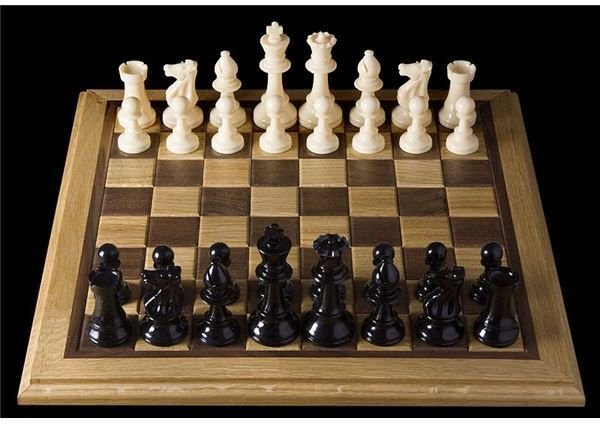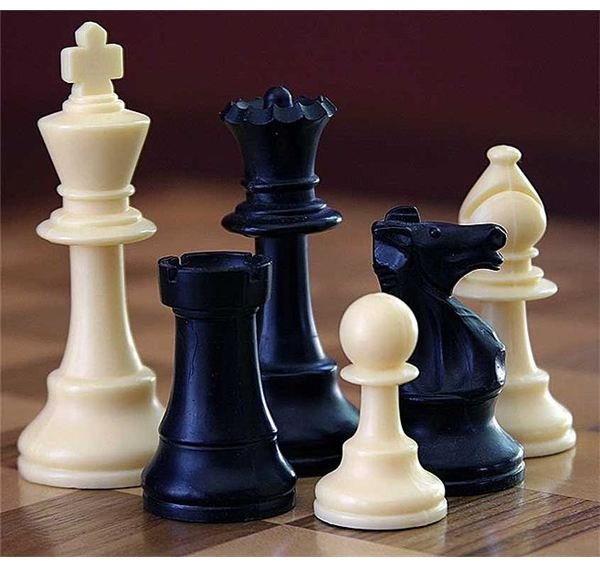How To Play Chess: A Beginner's Guide to the Rules of Chess

What is Chess?
Chess is a fun, strategic board game for two players. Each player has their own set of black or white pieces that have different ways of moving about the game board, an eight-by-eight grid made out of checkered squares. Players must try to gain an advantage by capturing enemy pieces and finally win by cornering the opponent’s King.
The game of Chess, as we know it, is said to have its roots in 6th Century India in a game known as Caturaṅga. The pieces represented military units like infantry and chariots on a battlefield. Eventually, these pieces evolved into the Pawns, Bishops, Knights and Rooks that we know as Chess pieces today. Now we’ll look at each of these pieces individually as we learn how to play Chess.
How do you set up the Board?
First, the players must decide who will play which color. When the game starts, the player controlling the white pieces will make the first move. Generally the color is chosen at random by flipping a coin, but the players can choose colors through mutual agreement.
The Chess board is then placed between the two players, with a white square at the right corner of each player’s side of the board. Now, the player must identify the pieces of their color and place them in the first two rows of their side of the board as follows (note, piece descriptions are based off of traditional Chess sets and may not apply to specialized sets):
-
Pawns are the smallest pieces, and each player has eight of them. They look like a short pillar with a sphere on top. All eight Pawns are placed in the eight squares of the second row from the player’s side of the board
-
Rooks look like castle towers, and each player has two of them. The Rooks are placed in the two corners of their player’s side of the board.
-
Knights have the shape of a horse’s head. Each player has two, and both are placed in the open squares adjacent to the Rooks.
-
Bishops look similar to a candle, and have a diagonal slit near the top of the piece. Each player has two, and places them in the open squares adjacent to the Knights.
-
Queens are the second largest pieces. Each player has one, and must place it on one of the two remaining squares according to its color. If the queen’s color is black, it’s placed on the black square. If the Queen’s color is white, it’s placed on the white square.
-
Kings are the tallest pieces in Chess, and have a cross on top. Both players have one, and must place it in the last remaining square on their side next to the Queen.
How do the Pieces Move?

The rules of Chess specify where and how each piece can move. On each player’s turn, one piece may be moved. All pieces (except the Pawn) can capture opposing pieces by ending their normal move in a square containing an opponent’s piece. Pawns can capture pieces, but must move in a different manner than usual to do so (see below). When a piece is captured, it is taken off the board and the piece that made the capture remains in its square.
-
Pawns always move straight forward one square, except when they are still on their starting square. If a pawn hasn’t moved from its starting square yet, the player can move it one or two spaces straight forward. Pawns cannot capture pieces by moving straight forward, but can only do so by moving diagonally forward one space into a square containing an opponent’s piece.
-
Rooks can move any number of spaces in one direction horizontally or vertically, as long as they aren’t obstructed by another piece.
The rest of the chess rules are on the next page. Click here to learn about special moves, check and checkmate!
Source: Wikipedia
Images from Wikimedia Commons, contributed by MichaelMaggs and Alan Light, respectively.
This post is part of the series: How to Play Chess: A Beginner’s Guide
Are you new to the world of Chess? This guide will introduce you to the rules of Chess, including board setup, piece-specific moves, special moves, check and checkmate!
